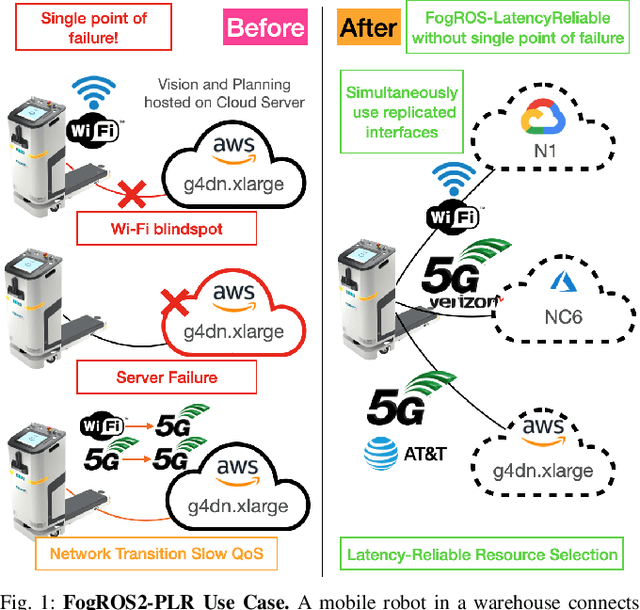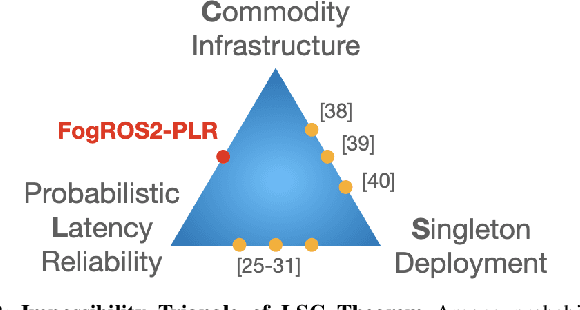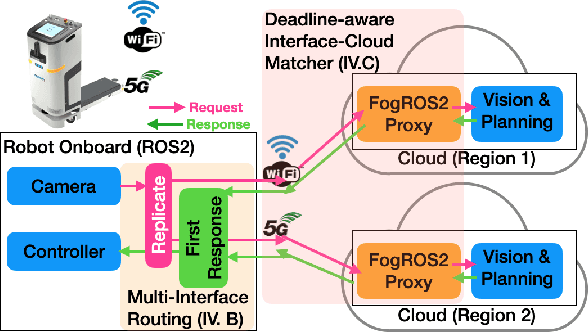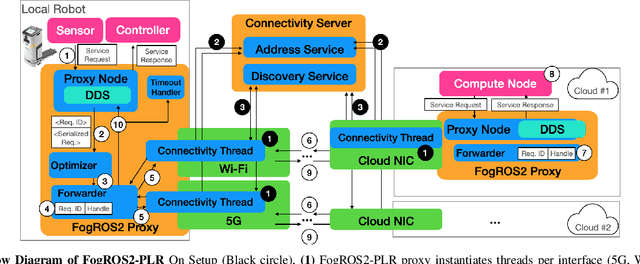FogROS2-PLR: Probabilistic Latency-Reliability For Cloud Robotics
Paper and Code
Oct 07, 2024



Cloud robotics enables robots to offload computationally intensive tasks to cloud servers for performance, cost, and ease of management. However, the network and cloud computing infrastructure are not designed for reliable timing guarantees, due to fluctuating Quality-of-Service (QoS). In this work, we formulate an impossibility triangle theorem for: Latency reliability, Singleton server, and Commodity hardware. The LSC theorem suggests that providing replicated servers with uncorrelated failures can exponentially reduce the probability of missing a deadline. We present FogROS2-Probabilistic Latency Reliability (PLR) that uses multiple independent network interfaces to send requests to replicated cloud servers and uses the first response back. We design routing mechanisms to discover, connect, and route through non-default network interfaces on robots. FogROS2-PLR optimizes the selection of interfaces to servers to minimize the probability of missing a deadline. We conduct a cloud-connected driving experiment with two 5G service providers, demonstrating FogROS2-PLR effectively provides smooth service quality even if one of the service providers experiences low coverage and base station handover. We use 99 Percentile (P99) latency to evaluate anomalous long-tail latency behavior. In one experiment, FogROS2-PLR improves P99 latency by up to 3.7x compared to using one service provider. We deploy FogROS2-PLR on a physical Stretch 3 robot performing an indoor human-tracking task. Even in a fully covered Wi-Fi and 5G environment, FogROS2-PLR improves the responsiveness of the robot reducing mean latency by 36% and P99 latency by 33%.
 Add to Chrome
Add to Chrome Add to Firefox
Add to Firefox Add to Edge
Add to Edge